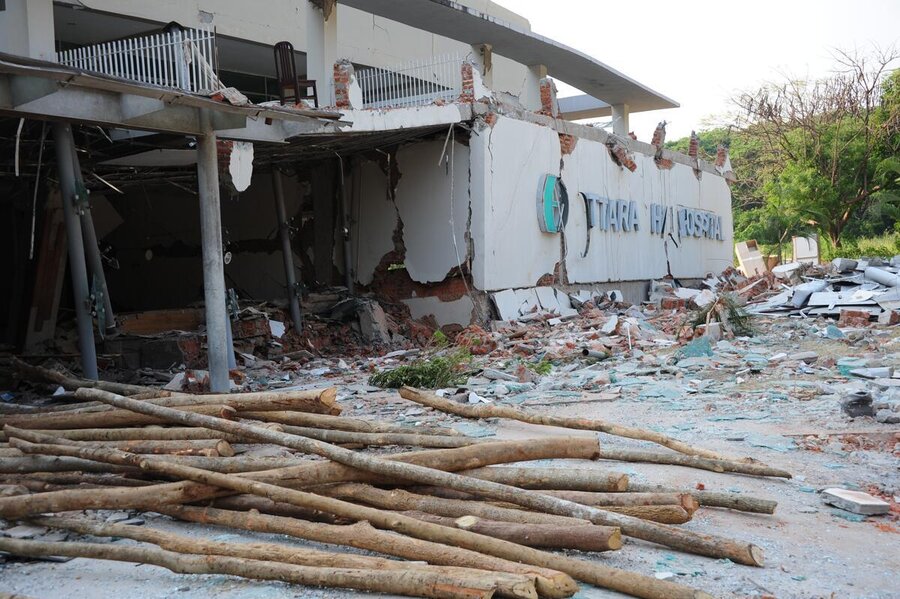Myanmar earthquake: WFP already on the ground
Latest: Read update (3 April): 'WFP reaches hardest-hit areas'
As the full extent of the humanitarian needs caused by Friday’s 7.7-magnitude earthquake is still being assessed, the World Food Programme (WFP) teams have started distributing high-energy biscuits to affected people in Nay Pyi Taw.
Preliminary reports indicate severe damage to infrastructure including bridges, buildings and roads in the central regions of Sagaing, Nay Pyi Taw and Taunggyi. More than 1,600 people are reported dead, and the death toll continues to rise.
WFP is in position to support 100,000 of the most affected people with ready-to-eat food first, followed by food and cash for food assistance to 800,000 people for a month.
WFP is also coordinating with humanitarian partners to setup an emergency logistics hub and emergency communications in order to launch a comprehensive life-saving response.

Access to earthquake hit areas and unreliable telecommunications continue to pose challenges for WFP and partners to mount a full-scale response to the massive needs. WFP is particularly concerned about impact in Sagaing Region, where information about circumstances is difficult to ascertain due to existing conflict, widespread restrictions to access and connectivity challenges.
"This is in a country that was already experiencing a humanitarian catastrophe because of an ongoing conflict," said WFP's Representative and Country Director for Myanmar, Michael Dunford, referring to the 12.5 million people – or one in four – projected to be food insecure in 2025.
"WFP is on the ground - we have been for years - and we are scaling up our operations to do emergency food distributions and also to provide logistics and IT support for the broader humanitarian response," he added.
Help WFP reach more earthquake survivors with life-saving food assistance



